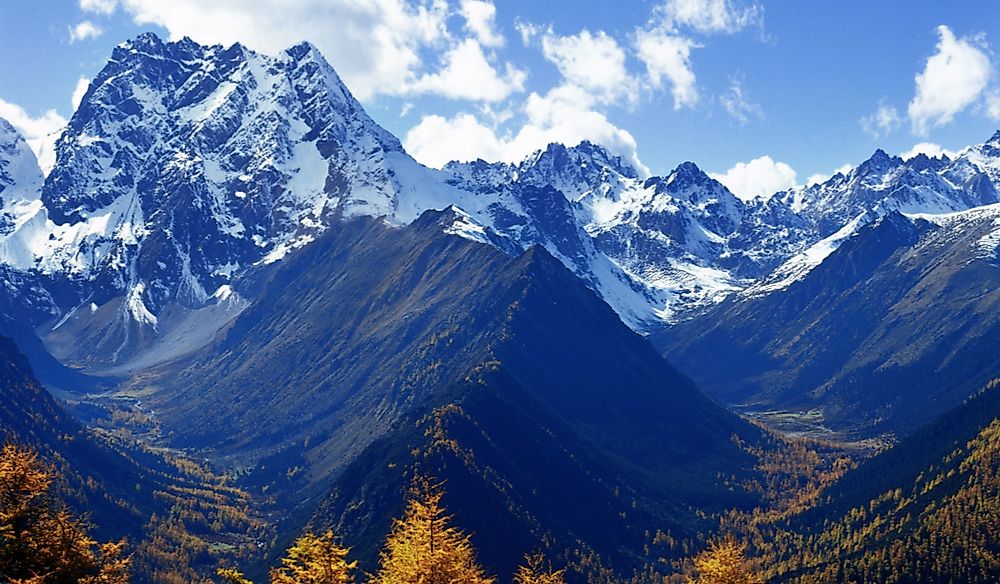Where Are the Hengduan Mountains?

The Hengduan Mountains are a group of mountain ranges located in southwest China, which connect the southeastern part of the Tibetan Plateau to the Yunnan-Guizhou Plateau. The mountains are about 560 miles long and 250 miles wide, and run primarily north-south, separating the Sichuan Basin's lowlands from the lowlands in northern Myanmar. The ranges cover a great portion of the western Sichuan Province and extend into the northern portion of Yunnan, as well as southern Qinghai. Additionally, the area covered by the Hengduan Mountains closely corresponds with the historical region of Kham.
Major Ranges within the Hengduan Mountains
The Hengduan Mountains consist of a group of mountain ranges, many of which run from north to south. The mountain ranges can be divided into several other sub-ranges, which are separated by deep river valleys of the major rivers in Southeast Asia. There are four major ranges of the Hengduan Mountains. The westernmost primary range runs between the Mekong and Salween rivers. The northern half of this range lies in the Tibetan Autonomous Region and is referred to as the Taniantaweng Mountains, while the southern part is named the Nu Mountains. The second mountain range runs between the Mekong and Yangtze rivers. The northern parts of this range are referred to as the Mangkam Mountains, the central sections are named the Ninchin Mountains, while the southernmost part is called the Yun Range. The third major range of the Hengduan Mountains runs between the Yangtze and Yalong rivers, a section commonly known as the Shaluli Mountains. The northernmost part of this range is a sub-range known as the Chola Mountains. The last major range of the Hengduang Mountains is the Daxue Mountains, located between the Yalong and Dadu rivers. This range is dominated by Mount Gongga, which has the highest elevation in the Hengduan Mountains. In addition to the four major ranges, there are other adjacent ranges that are sometimes included in the Hengduang group of ranges, including the Gaoligong Mountains, Min Mountains, and Qionglai Mountains.
Biodiversity of the Hengduan Mountains
The Hengduan Mountains are a biodiversity hotspot in South China. In fact, it is one of the world's 35 biodiversity hotspots. The extreme climate and geography of the region have kept it largely unexplored. The dense and relatively isolated mountains, as well as the fact that the area was free from glaciation during the Ice Age, makes it a complex habitat with a high level of biological diversity. The mountains are mainly covered by the subalpine coniferous forests. The area is rich in vascular plants and is home to about 40% of China’s 30,000 plant species. About 3,000 of these species, including 30 vascular plants, 100 ferns, and 20 gymnosperms, are endemic to the area. The area is also rich in fungi and mosses. Ranges on the easternmost part of the Hengduan Mountains are home to a wide variety of rare and endangered species of fauna, including the giant panda. Other species that are indigenous to the mountain ranges include the Chinese yew, plus other rare types of primates, deer, and plants.











